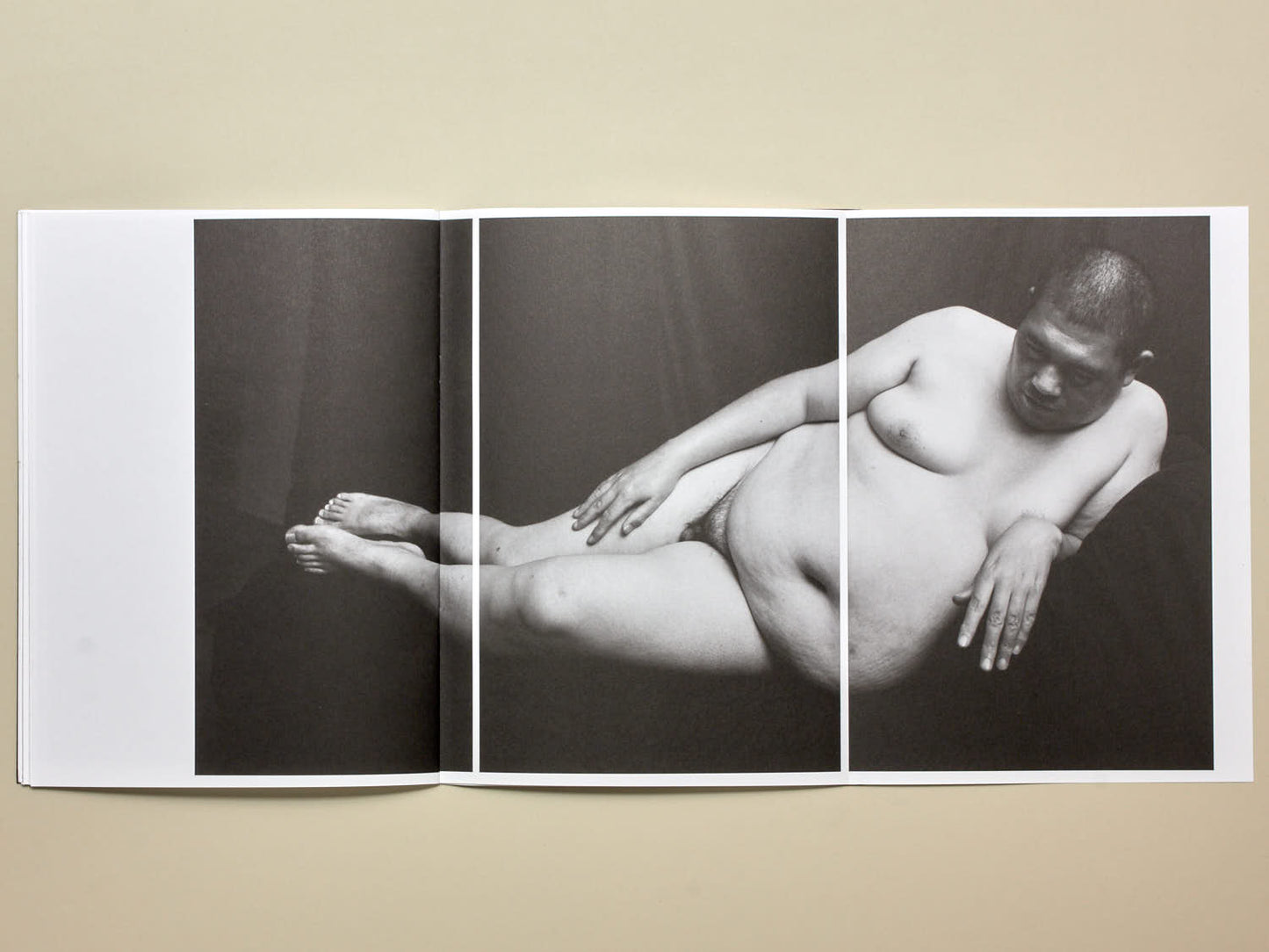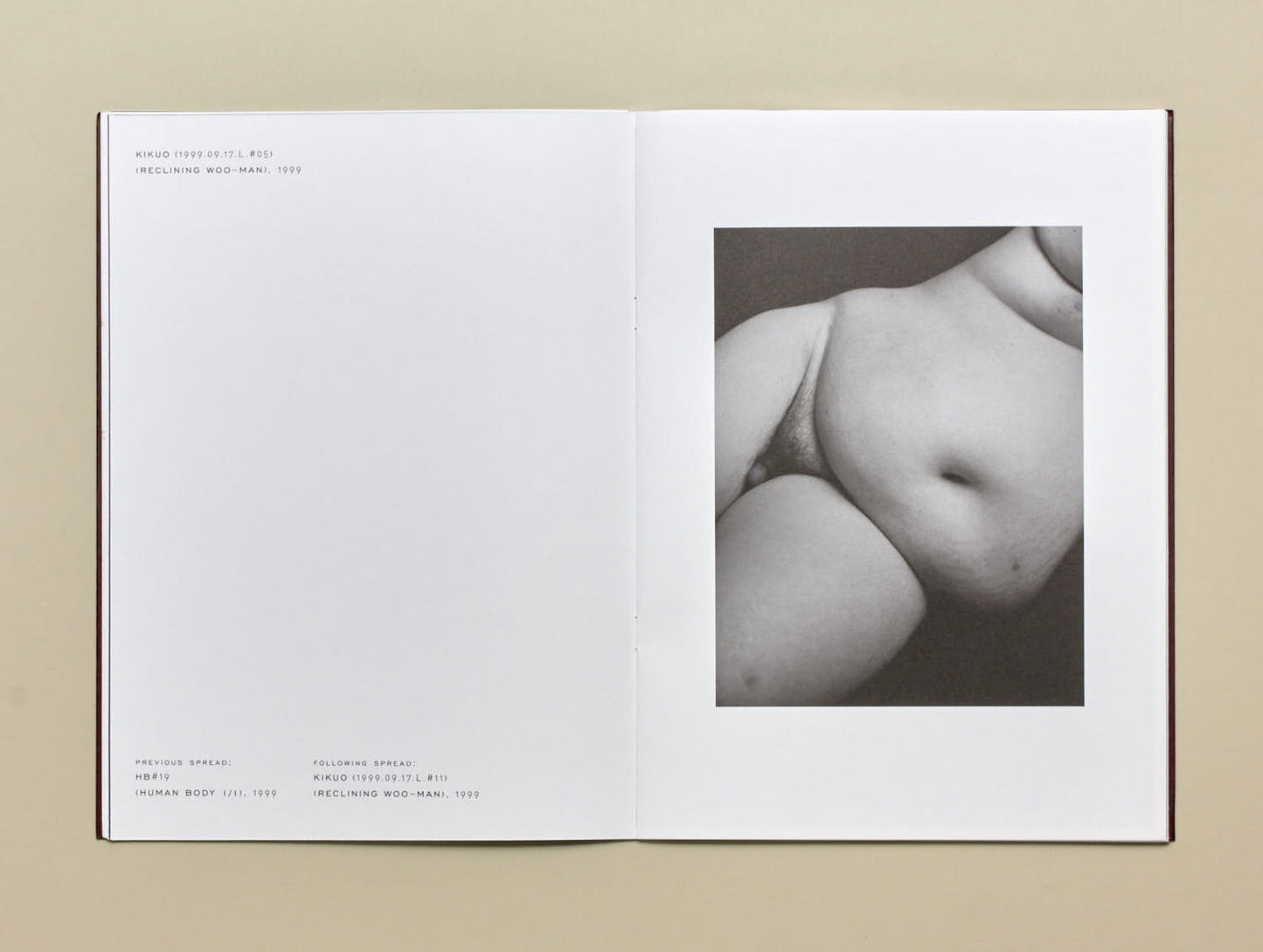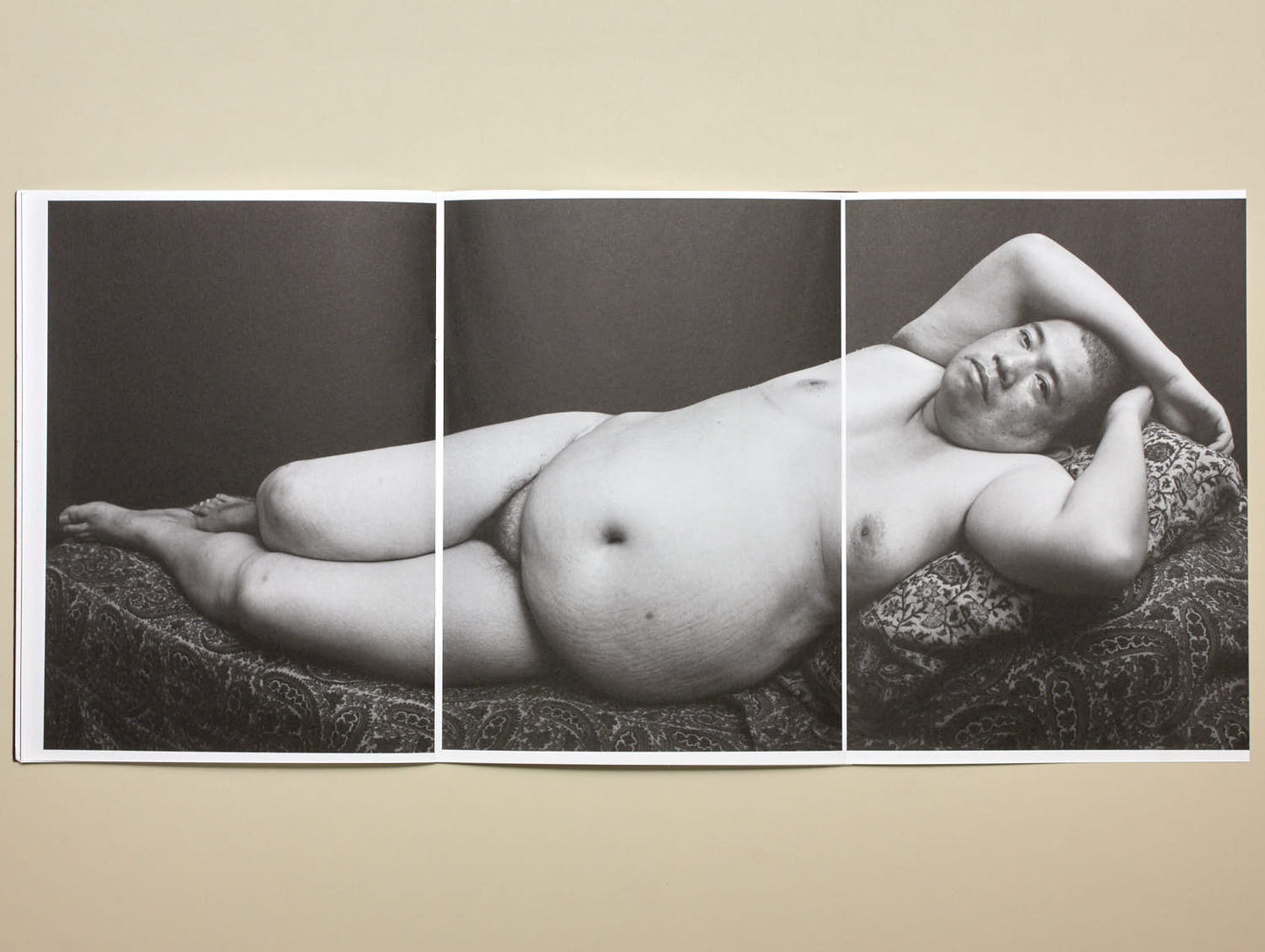Couldn't load pickup availability
The notable series Reclining Woo—Man (1997–2001) by Ryudai Takano (b. 1963, Japanese) exhibits an unalike depiction of nudity, which often being ignored in the arts. The title derives from “Reclining Woman”—a title often found among European classical paintings. The title is a parody, but the photographs are not.
Takano was exploring how to capture his own sense of beauty prior to meeting Kikuo. It was such an overwhelming encounter that caused Takano to abandon his quest. Kikuo; a stout, naked, middle-aged man, lying on a sofa bed. To give an example, it might have felt for him as if Mars, the Roman god of war appeared as a muse. After that, Kikuo continued to drive Takano’s creation for 10 years.
When the camera became popular around the mid-1960s, many artists began to employ photography by questioning if “photography can be sufficient as art?”. However, soon the question got slightly altered to the essence of art, “what is ‘to see’ the world?”. This extended the definition of photography. Photographs early possessed a record-ability and multiplicity and when digital photography emerged in common households in the late 1990s it added its visual effects. Nowadays, photography has surpassed these ideas; it does not solely seek for “to see” but it has prompted us to be aware of the uncertainty of “what we see”. As Duncan Wooldridge mentions in his foreword, Ryudai Takano's photographs are showing us “how to rethink vision”—we will know the multifaceted world and its diversity through his photographs.
The book contains a foreword written by critic and essayist Duncan Wooldridge (b. 1981, British).









